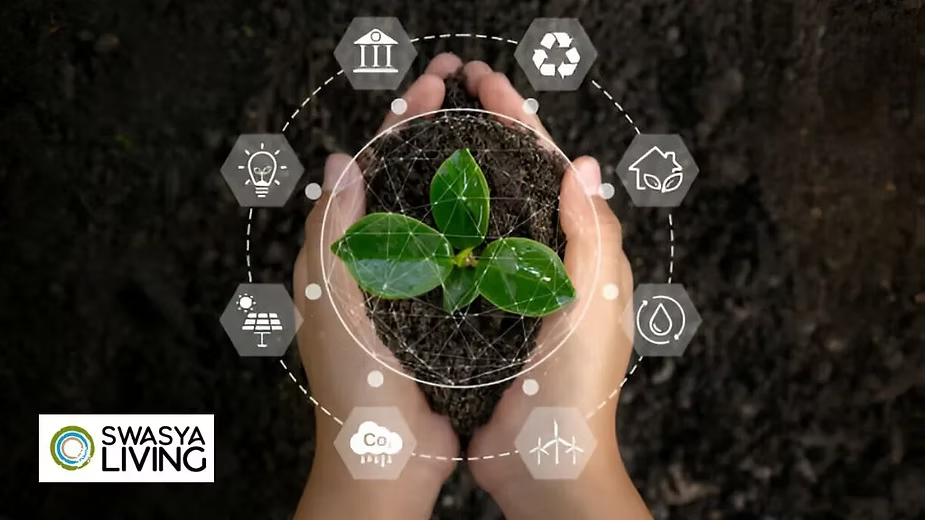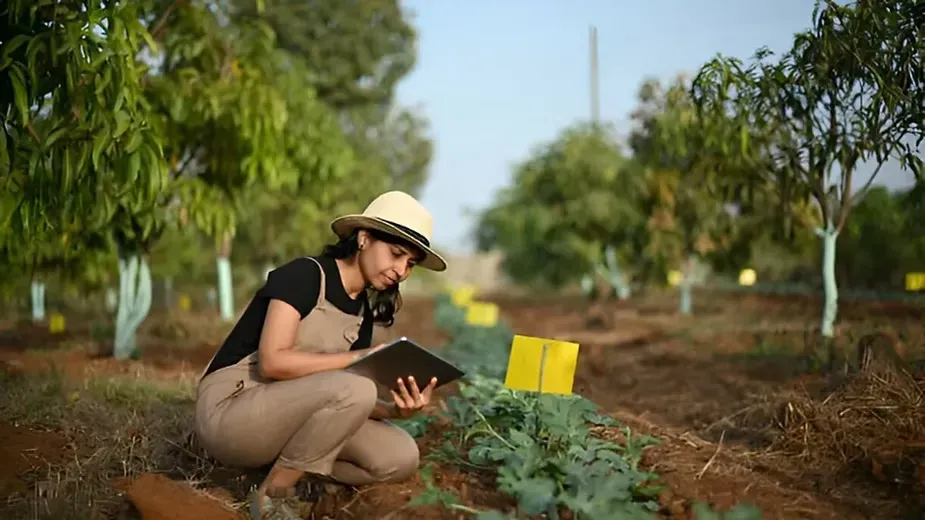Sustainable Agriculture: Practices, Importance, & the Role of Organic Farming!
Published on July 25, 2025

Sustainable agriculture is essential in addressing the major global needs of producing food, while at the same time safeguarding natural resources and environments for future generations.
It underscores farming practices that are environmentally sound, socially just, and economically sustainable. In itself, sustainable agriculture casseroles both innovative and traditional methods to minimize environmental effects through resource conservation and ensure biodiversity.
Through this, the entire operation ensures ecological health over the long term, mainly through an improvement in soil fertilisation, water conservation, and minimization of greenhouse gas emissions. Key to the maintenance of ecological balance are practices such as crop rotation, organic farming, and agroforestry.
Sustainable agriculture contributes to enhancing food security. It develops resilient farming systems that can adjust to changing climatic conditions. It promotes ethical practices in all sectors: the farmer, the community, and the consumer.
Besides saving our planet, such an approach will also shape a healthier and more equitable future for posterity to thrive.
What Is Sustainable Agriculture?
Sustainable agriculture ensures farming productivity while conserving resources and protecting the environment. It prioritizes practices that minimize ecosystem damage, such as crop rotation, conservation tillage, and integrated pest management, to maintain soil fertility and reduce reliance on synthetic inputs. Techniques like agroforestry and organic farming promote biodiversity, sequester carbon, and mitigate climate change.
This approach addresses challenges like soil degradation, water scarcity, and climate change, fostering resilient farm systems adaptable to environmental shifts. Beyond environmental benefits, sustainable agriculture supports social and economic equity by empowering communities and farmers, ensuring a productive, eco-friendly food system for current and future generations.
Importance of Sustainable Agriculture

The critical challenges faced by this kind of farming involve the problems of soil degradation, water scarcity, and climate change. Examples of these techniques include crop rotation, conservation tillage, and integrated pest management, thus protecting soil fertility and ensuring long-term usage of water and less reliance upon such synthetic inputs as fertilizers. Practices such as agroforestry and organic farming promote ecological balance, sequester carbon, and "mitigate climate change."
1. Environmental Protection
One of the core objectives of agriculture is to minimize environmental harm. Conventional farming often relies heavily on synthetic chemicals and fertilizers, leading to soil degradation, water pollution, and increased greenhouse gas emissions. In contrast, sustainable practices like crop rotation, organic farming, and integrated pest management help maintain ecological balance. These methods protect natural habitats, reduce pollution, and enhance biodiversity, ensuring the long-term health of ecosystems.
2. Soil Health and Fertility
One solid foundation should be first laid down with any productive agricultural system. Generally, farming practices that are not sustainable may strip nutrients or structure from the soil, and hence severe erosion could occur very easily. Some of the agriculture techniques are cover cropping, minimum tillage, and organic composting to restore soil fertility and structure. These earthworks will improve soil fertility, conserve moisture, and arrange for microbial activity at whatever time the soil is involved in function and productivity.
3. Water Conservation
Water is a prime necessity for agriculture, and global food security is also at major risk due to the scarcity of water. Sustainable agriculture fully utilizes efficient water management techniques such as drip irrigation, rainwater harvesting, and mulching to minimize wastage and maximize water use efficiency, ensuring a water-saving and better crop-yielding form of production. These services not only help save water but also help in increasing crop yields and reducing the stress on water resources.
4. Food Security
In engaging with sustainable agricultural practices farmers are adopting more effective food production systems that accommodate changes in the weather and the continued increase of global populations. This strategy lowers reliance on practices that deplete resources and are harmful to the environment, resulting in a protected reliable food supply. Supporting farmers in employing sustainable practices facilitates better adaptation to environmental challenges and an increase in sustained food production and distribution.
5. Climate Change Mitigation
Agriculture both contributes to and suffers from climate change. Sustainable agriculture addresses these issues by reducing carbon emissions and enhancing carbon sequestration in soils through agroforestry, conservation tillage, and organic farming. All these methods mitigate climate change while creating sustainable food systems.
Thus, sustainable agriculture is important, as it helps nature regenerate, keep soil healthy, conserve water from daily waste, and, most importantly, provide food security for people by mitigating climate change. Through these practices, a balanced and robust agricultural system is created to support human and ecological communities.
Sustainable Agriculture Practices & Their Management
From preventing soil erosion, improving water use, and fuel, reducing pesticide use, and promoting a balanced crop rotation, sustainable agriculture practices are implemented. Below are some examples of sustainable agriculture efforts that have contributed to productive and effective practices and developed a good rapport among practitioners in unrelated fields:
1. Crop Rotation and Diversification
Rotating crops is the planting of other kinds of plants in a rotation manner to make the quality of soil better, and besides that, it improves pests' activities and lowers biodiversity. It brings market and climatic risk with mitigation.
2. Conservation Tillage
Conservation tillage reduces soil disturbance, and conserving crop residues and leaving them on the surface preserves soil structure and organic matter. It also slows down transpiration, promotes microbial activity, and brings better aeration in the soil.
3. Integrated Pest Management (IPM)
IPM is more of an integration than a replacement of biological, cultural, and mechanical tools. With IPM, the proportion of reliance on chemical pesticides drops dramatically due to the fact that beneficial organism populations may explode if implemented correctly.
4. Agroforestry
Agroforestry is a deliberate process employed to incorporate trees, where forests are planted together with shrubs into agricultural landscapes for a host of benefits. Agroforestry accommodates the aspect of biodiversity enhancement through tree planting alongside soil conservation practices and the opportunities that they provide in terms of aggregated farm income by providing such outputs as timbers, fruits, and nuts.
5. Water-Saving Irrigation Techniques
Getting the right and appropriate treatment to the crops is possible through drip and sprinkler irrigation systems, he says, yet does so very economically.
6. Organic Farming for Sustainable Agriculture
Organic farming is one of the most commendable forms of farming in which one can involve oneself. It excludes every synthetic chemical used by integrating natural ingredients or elements, like compost and manure, and with biological pest control. The soil's fertility will be revitalized, the pollution will be steadily reduced, and the wane of biodiversity will be reversed.
Organic Farming For Sustainable Agriculture

Sustainable agriculture is a vast river with many rivulets, one of the important rivulets best represented by organic farming. Both have common end goals, like reducing the environmental risks due to the dependence on conventional energy sources, conserving non-renewable resources, producing clean, organic food, etc. However, sustainable agriculture would encompass many other practices like precision farming and integrated systems, which are areas that organic farming would not touch.
What is most distinctive about organic farming for sustainable agriculture is that they work as a team towards a concerted goal of harming the environment as little as possible. In a sustainable agriculture setup, any kind or manner of an organic farming operation places more emphasis on utilizing resources that are seen as renewable and maintaining ecological balance as complementary to the whole system derived from major areas where an emphasis is placed on the interaction of systems parts. Thus, these efforts mean a healthier world and a more agriculturally supple one.
What is the Future of Sustainable Agriculture?
Sustainability, the future and everything in it, lies in inventiveness, education, and collective efforts. Climate change could make it harder for scarce resources, increased food demand, and prepared applications.
Farmers need to adopt the most advanced technologies and sustainable practices to overhaul their farming system across all sectors. Some of the emerging innovations are precision farming, vertical farming, and regenerative agriculture, which, if adopted, would bring improved productivity with minimized environmental harm. They optimize resource use, improve soil health, and reduce waste, all of which have a major say in the performance of fertilizers and plant growth regulators for the bio-based future for agriculture.
Education, like improvement by innovation, comes from the conservation of sustainable agriculture practices. When the farmers and agricultural community get acquainted with the techniques of sustainability, it becomes possible to popularize and create environmental stewardship with a good factor of conservation in nature.
Analysis and interpretation must be made about the environment when analyzed and interpreted in terms of consumer behavior. Today, if the demand in food is for products produced in a sustainable manner, it drives the farmers to ensure that everything is produced using eco-friendly methods no farmer wants to bother themselves with that.
Policymakers will have the biggest impact on the future landscape of sustainable agriculture. The government must design frameworks with the aim of encouraging farmers to adopt the practice of sustainability. Supporting such policies with essential incentives can help to speed up this transition, such as financial help, subsidies for eco-friendly farming equipment, or investment in agricultural research.
The future of sustainable agriculture practices depends largely on the united efforts of farmers, scientists, regulators, and consumers in the development of a resilient, productive, green, and overall effective agricultural system for the benefit of current and future generations.
Conclusion
There are elements of biodiversity, soil health, and a secure carbon cycle. Another aspect of sustainability is selecting the right breeds or varieties that belong to the agroecosystem or farming system in a specific locality and are better suited to the existing climatic conditions. Sustainable agriculture can help solve some of the world's biggest problems related to depletion, as put in one document: climate change, food insecurity, and environmental degradation.
Forage plants help prevent soil erosion, making the land immune to gully erosion, while the practices of continuous cover and complex permanent emplacement of vegetative material all protect the soil. This fits into the greater picture of helping the people that live in these lands. Experts say that emerging lawns in protected riparian areas are a potential benefit for policymakers and the communities at large, including the farming sector.
